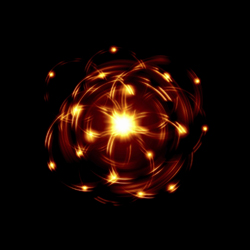Quantum experiments simulating solid-state devices
Fermions are quantum particles such as nucleons or electrons that are the building blocks of matter. The behaviours of materials depend on the interplay of their fermionic nature, their internal crystal structure and interactions among constituents. This complex internal structure is still largely unknown yet directly relevant to superconductivity, quantum computing and even the organisation of the Universe. Artificially made ultra-cold atomic gases have opened the door to novel experiments exploring quantum interactions and many–body quantum physics. In recent years, scientists have prepared such gases facilitating the study of their fermionic nature (ultra-cold atomic Fermi gases), making it possible to study complex quantum structures, transitions in states and electron spin interactions. Scientists exploited quantum simulation using strongly interacting Fermi gases in the EU-funded project 'Microscopy of interacting Fermi-gases: High-resolution imaging and statistical properties' (MIGROS). Using high-resolution microscopes, investigators first observed the behaviour of small ensembles of ultra-cold fermionic atoms in a large cloud demonstrating that two measures (total spin fluctuations and spin susceptibility) cannot be explained by classical descriptions. In an experimental setup of two reservoirs connected by a channel, scientists studied the conduction of fermions emulating transport of electrons in a nanostructure and facilitating analogies with solid-state physics. They were able to observe transitions to superfluidity and the associated very low resistance at its onset, as well as behaviours of superfluids under various conditions. Superfluidity is intricately related to superconductivity and even understanding of neutron stars and quark–gluon plasmas. Manipulation and visualisation of the behaviours of ultra-cold Fermi gases in a model simulation has paved the way to the study of spin transport in cold atomic systems. The phase transitions observed exhibit universal transport properties related to the most fundamental concepts of theoretical physics. Thus, an exciting new model experimental system promises to enable testing of the theories about the structure of the Universe, including the nature of space–time in the vicinity of a black hole. Closer to home, the setup enables quantum simulation not only of materials, but also of devices made of more than one component. This development promises to shed new light on concepts for quantum computers and quantum machines.

